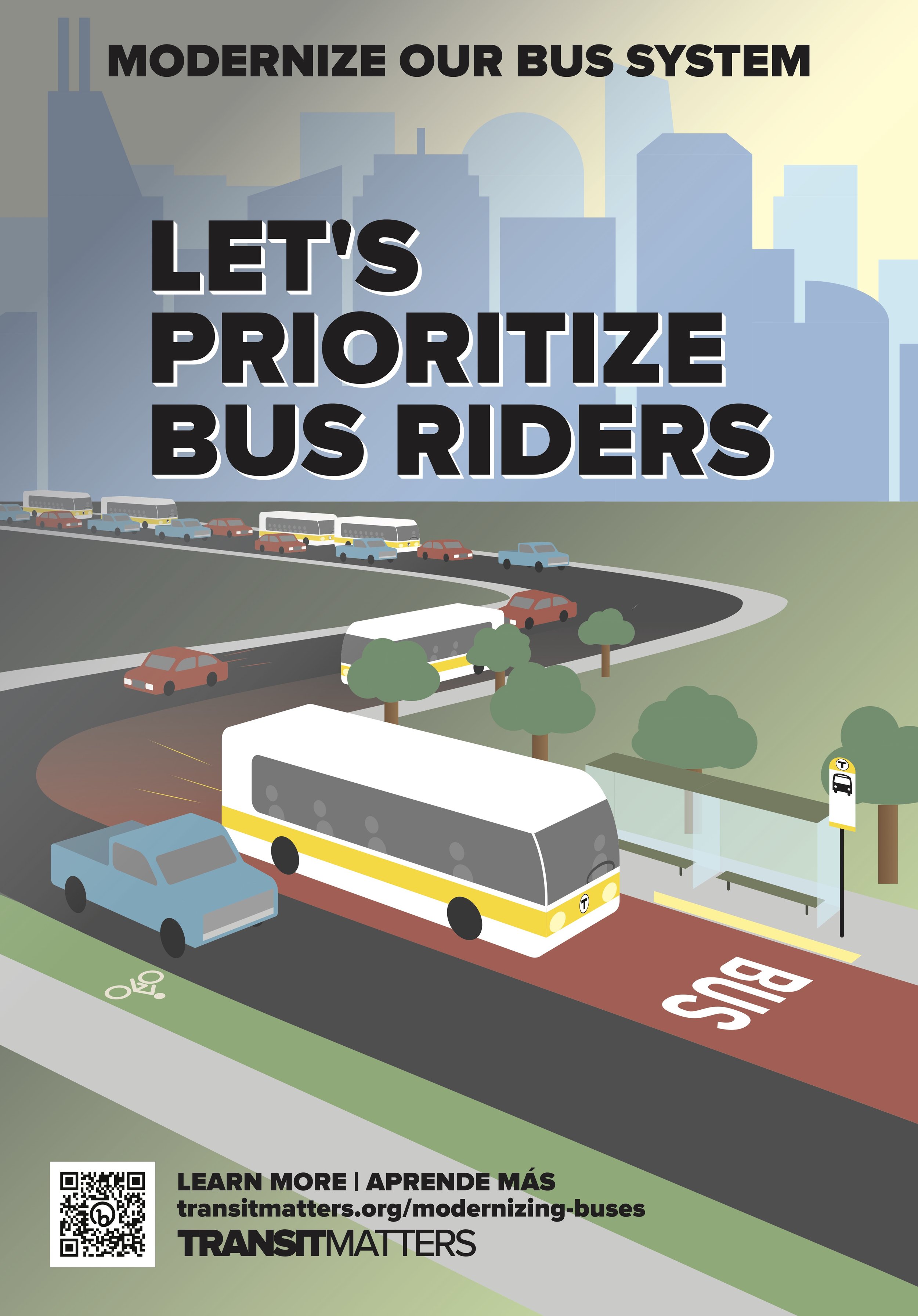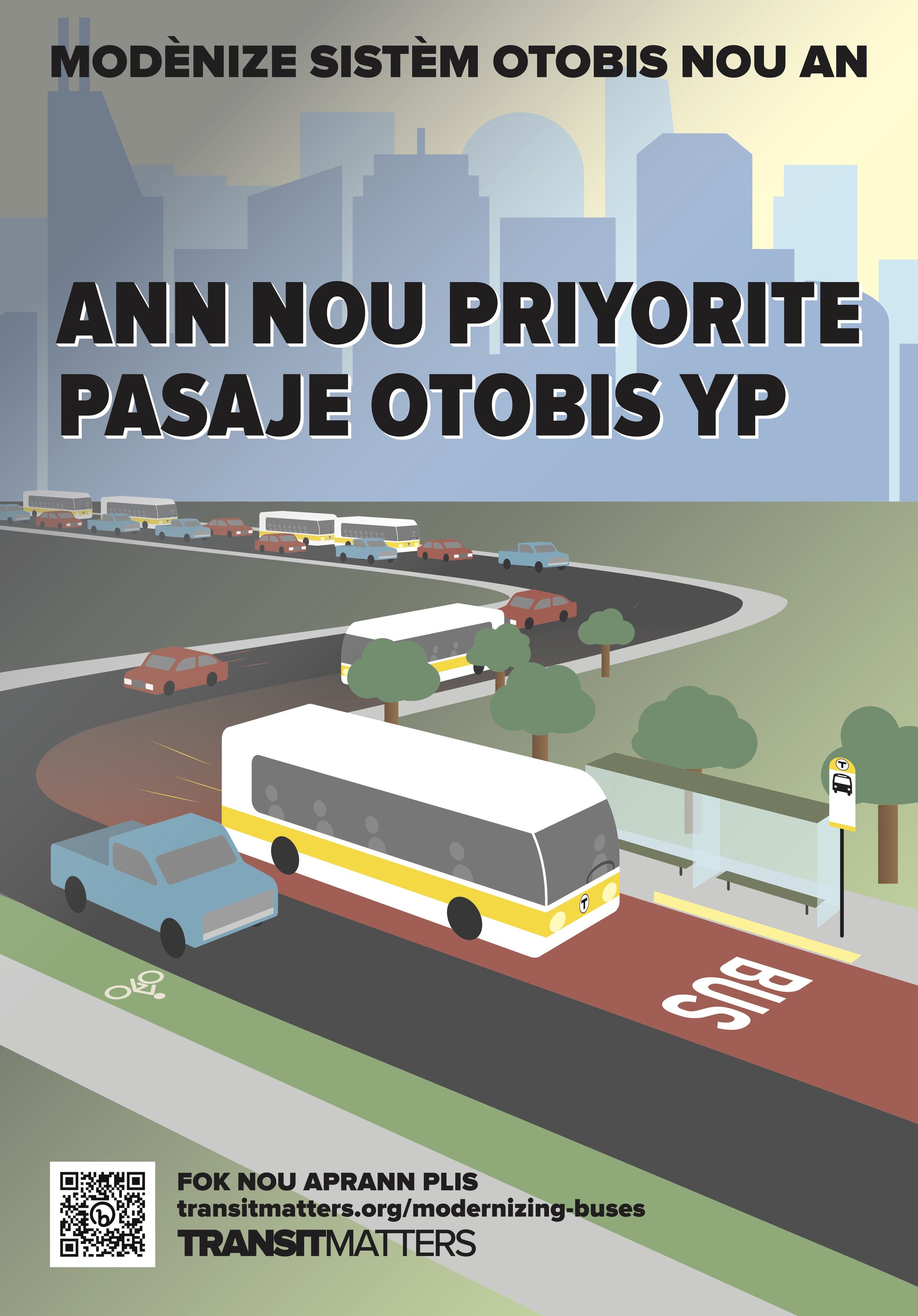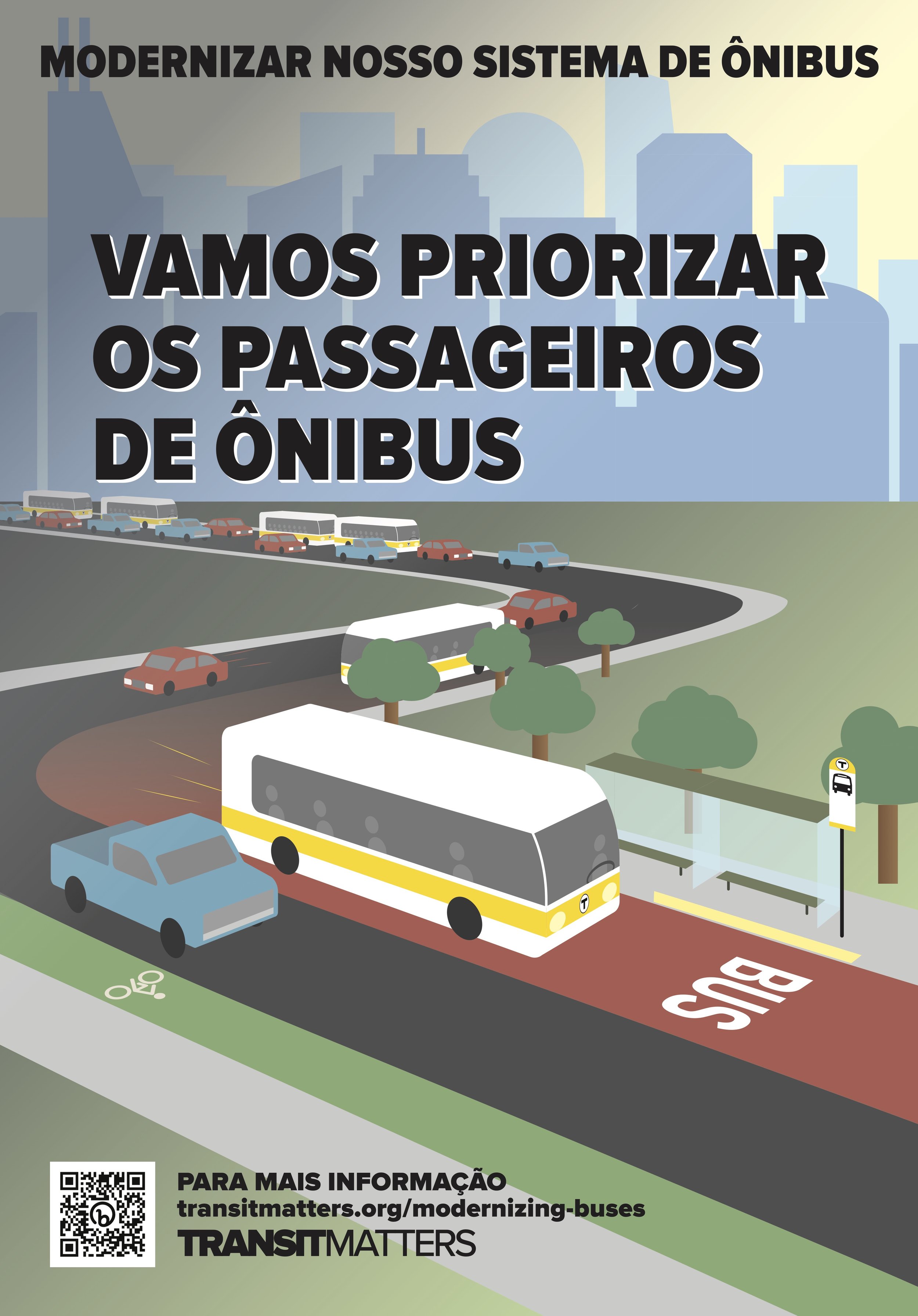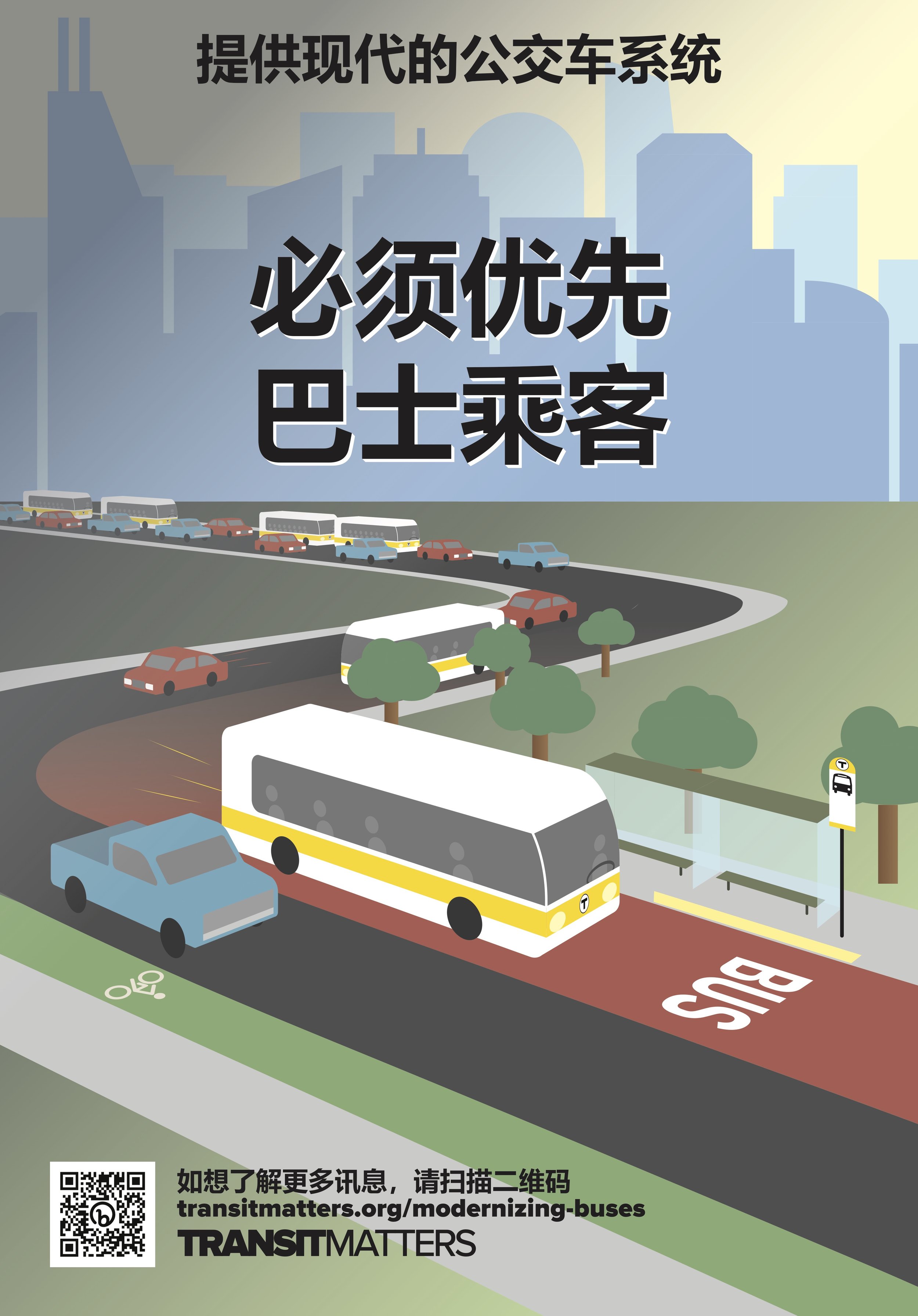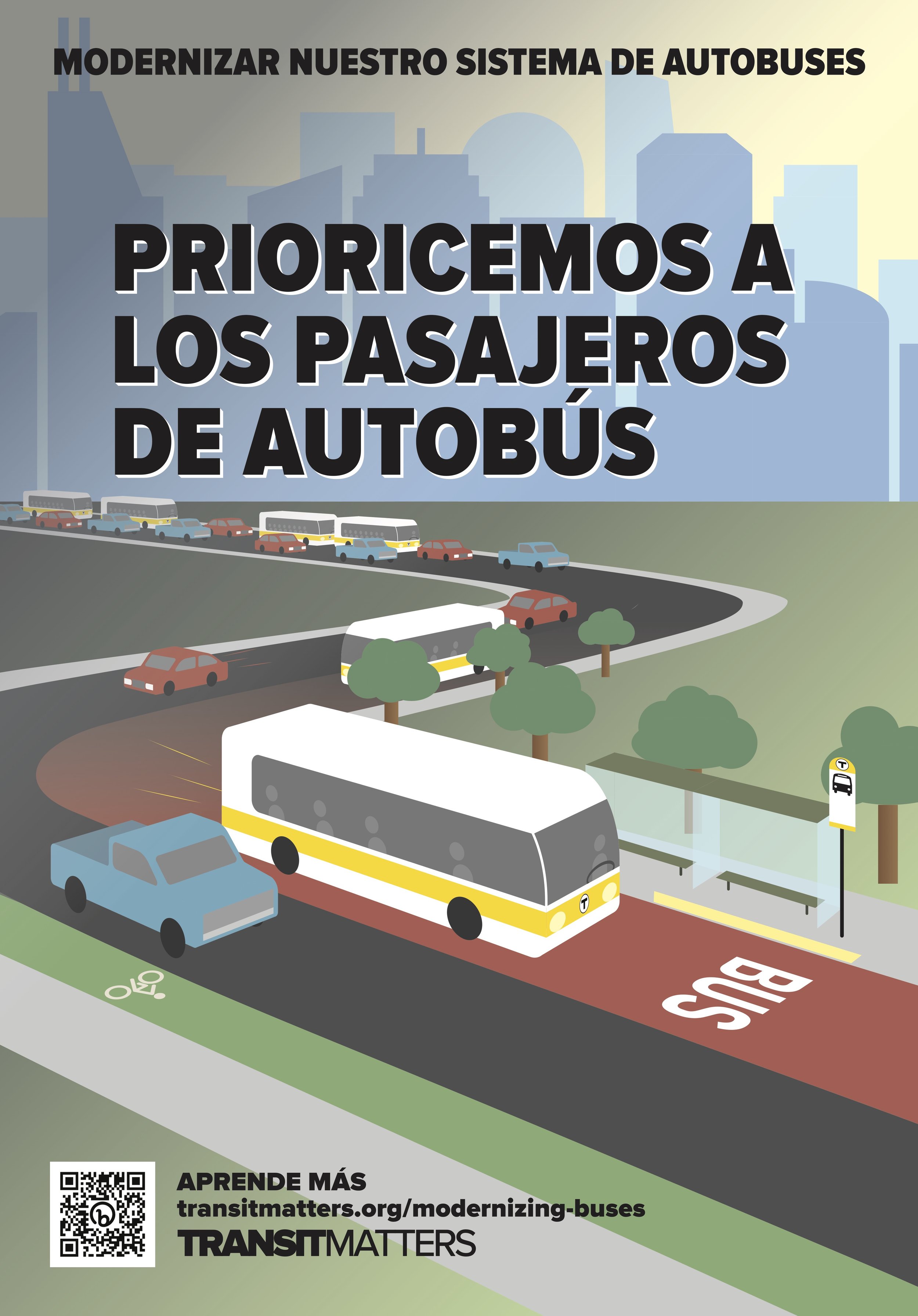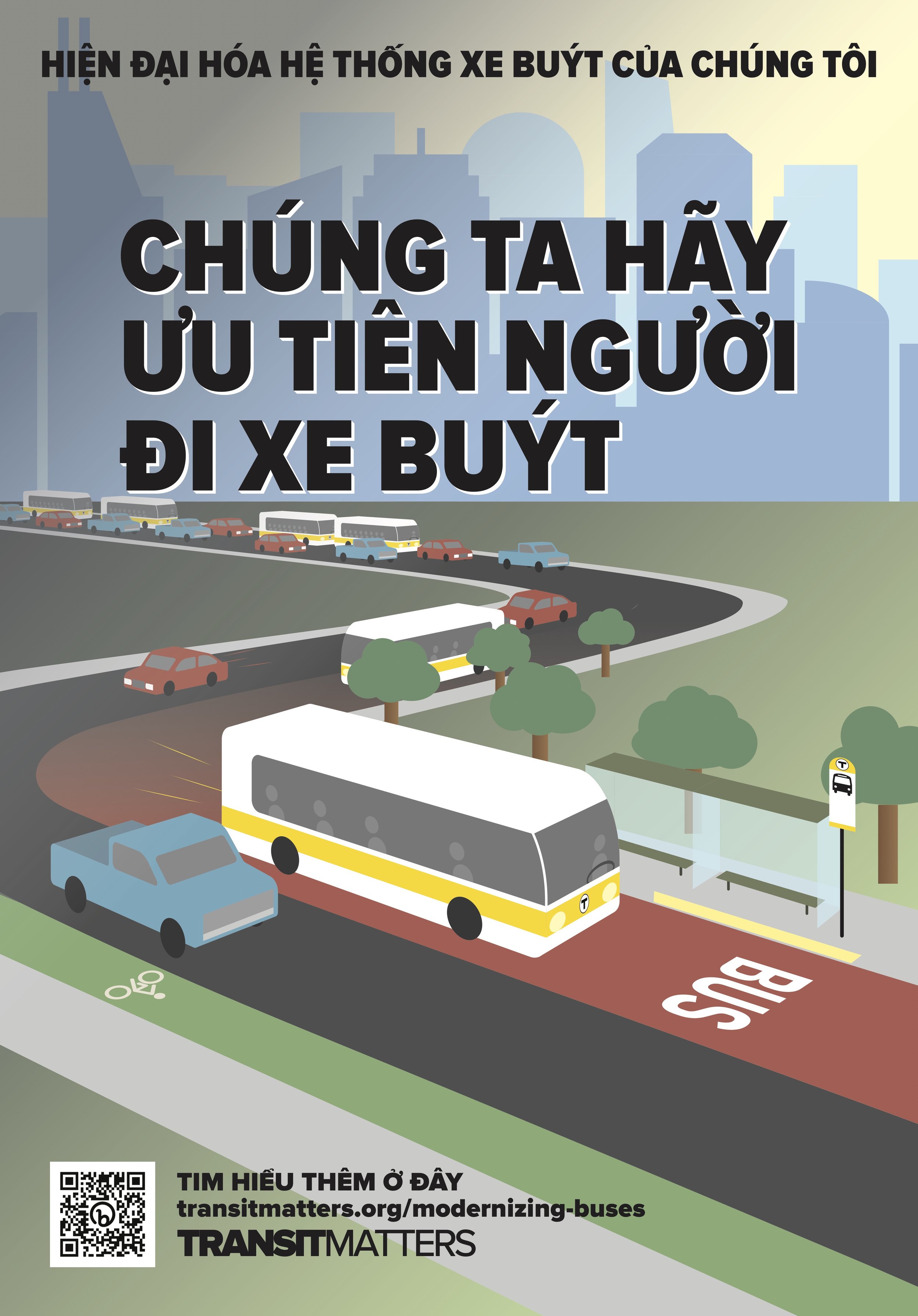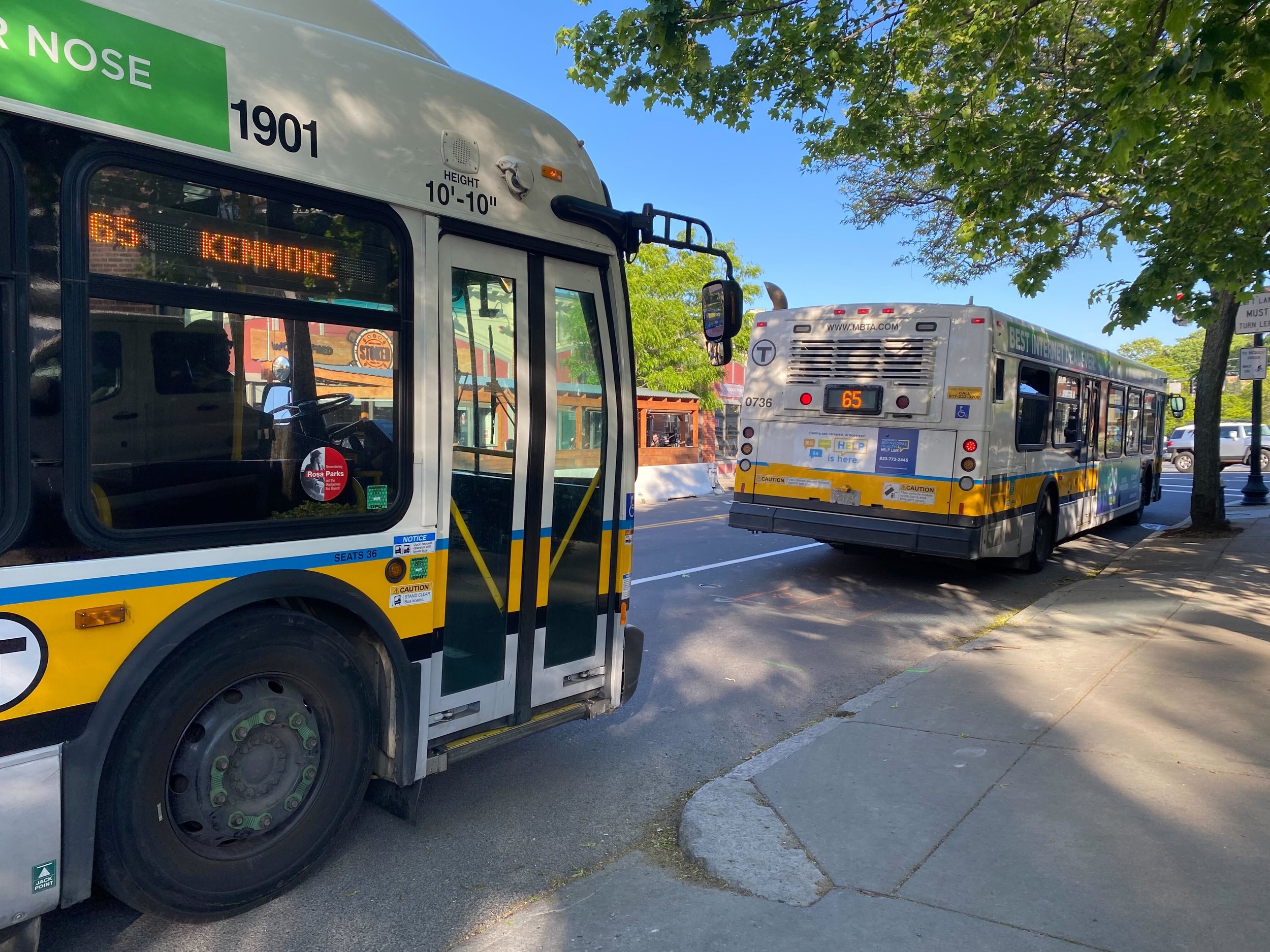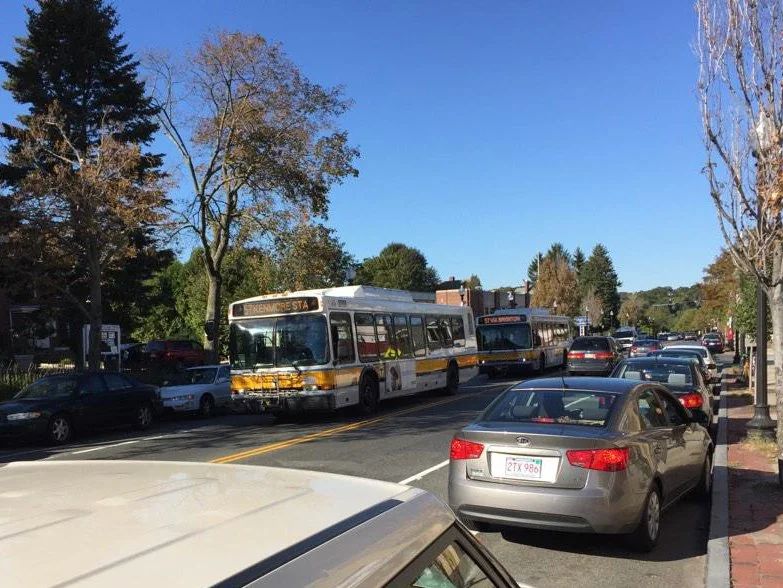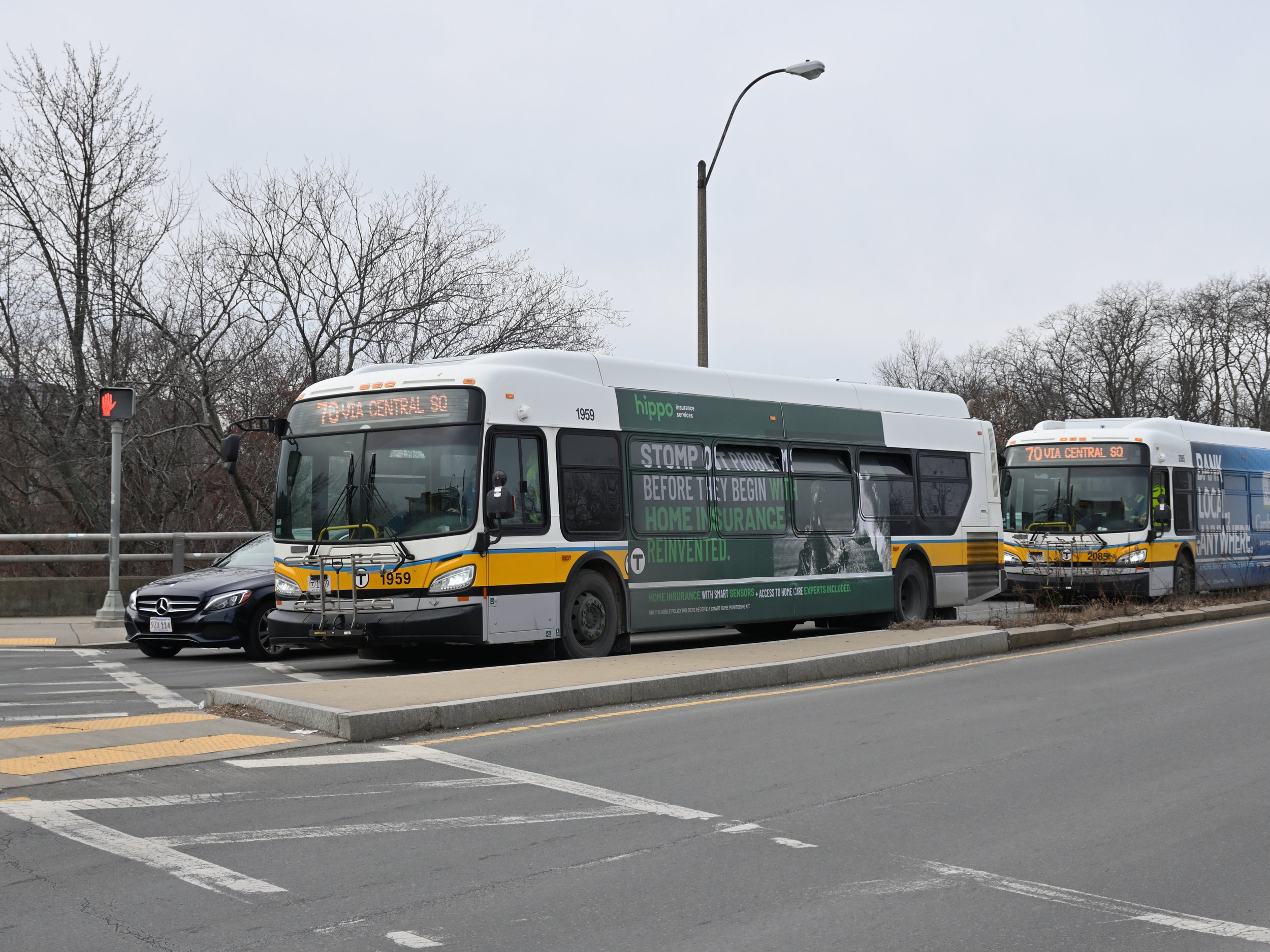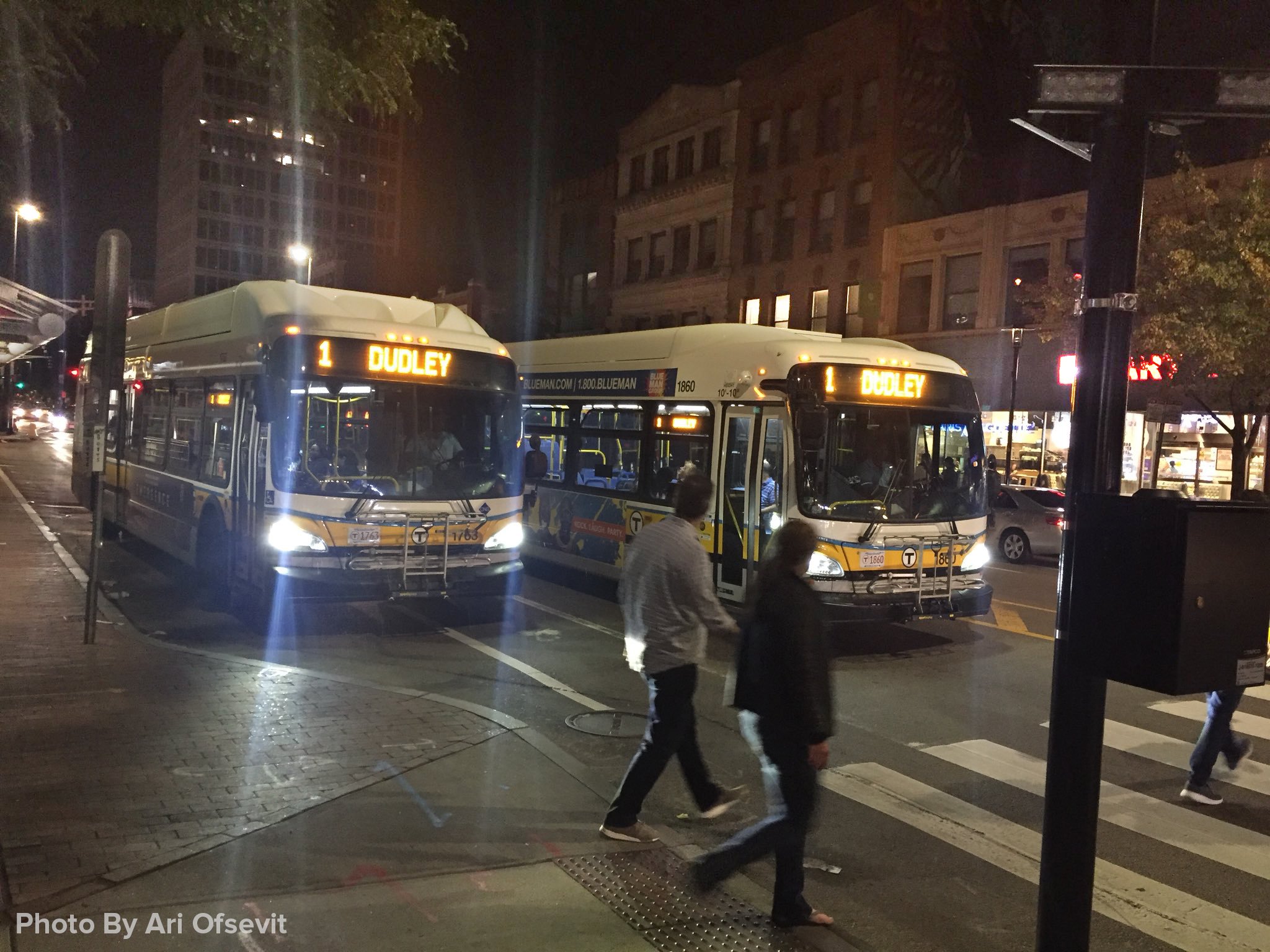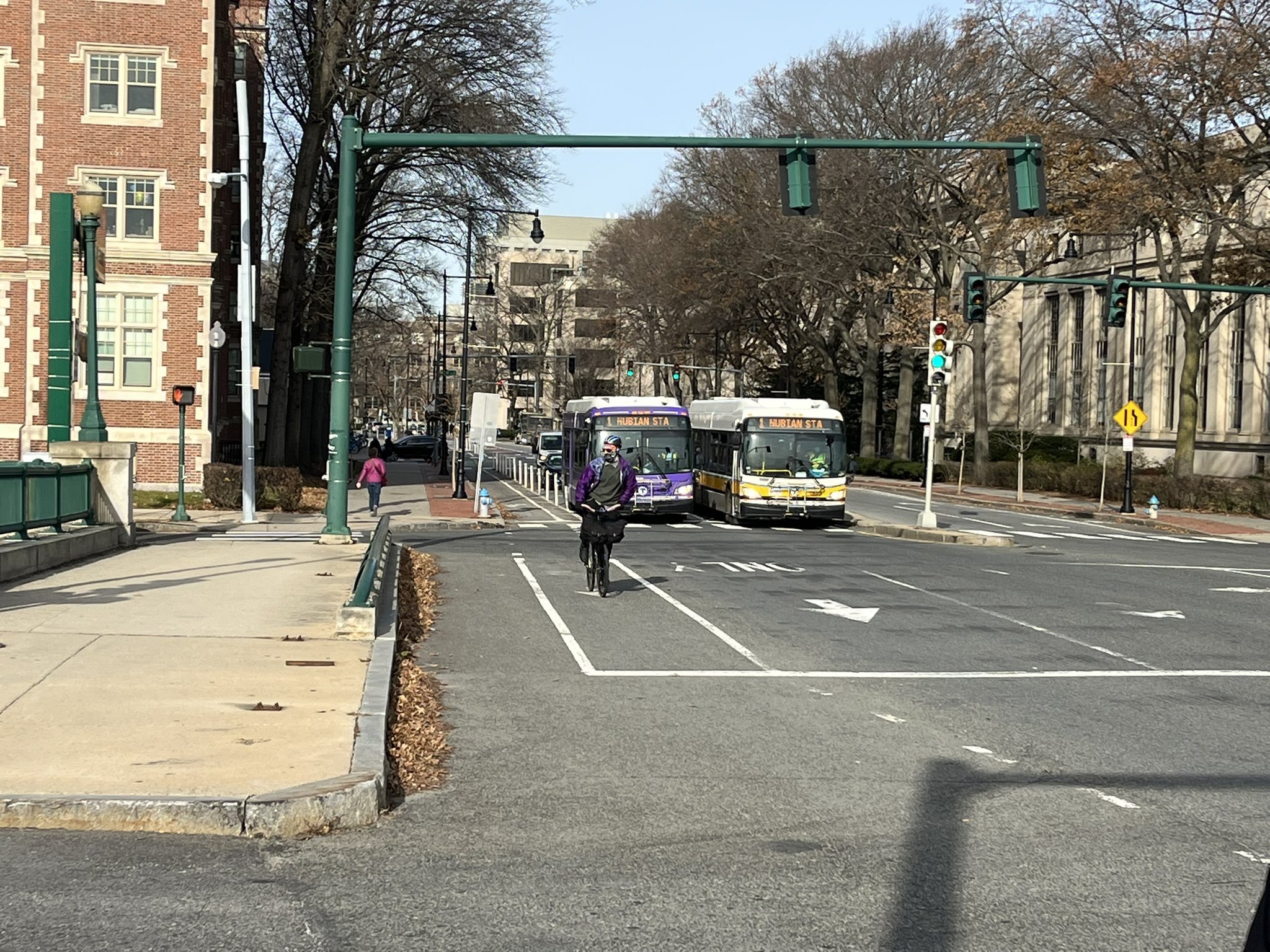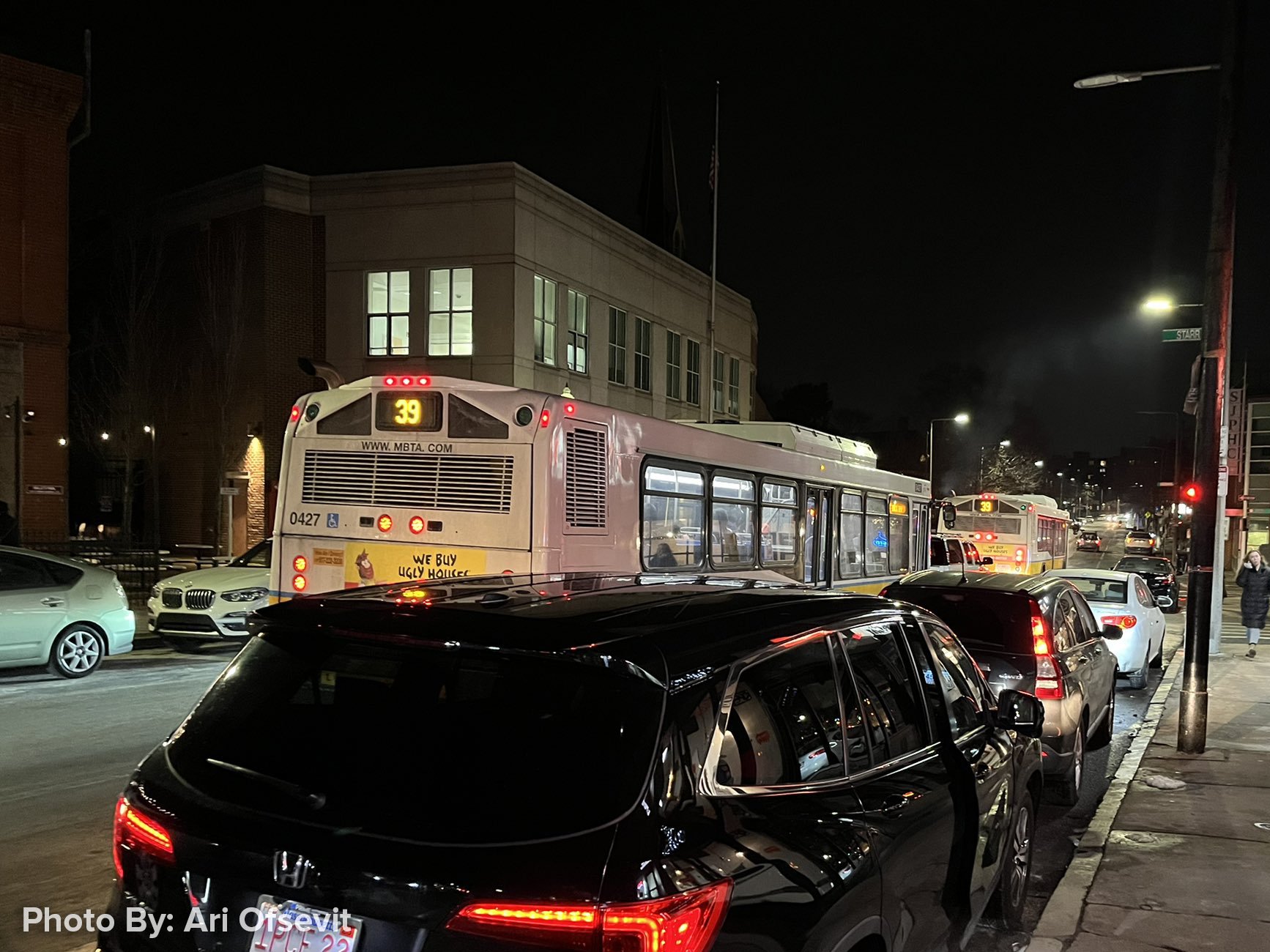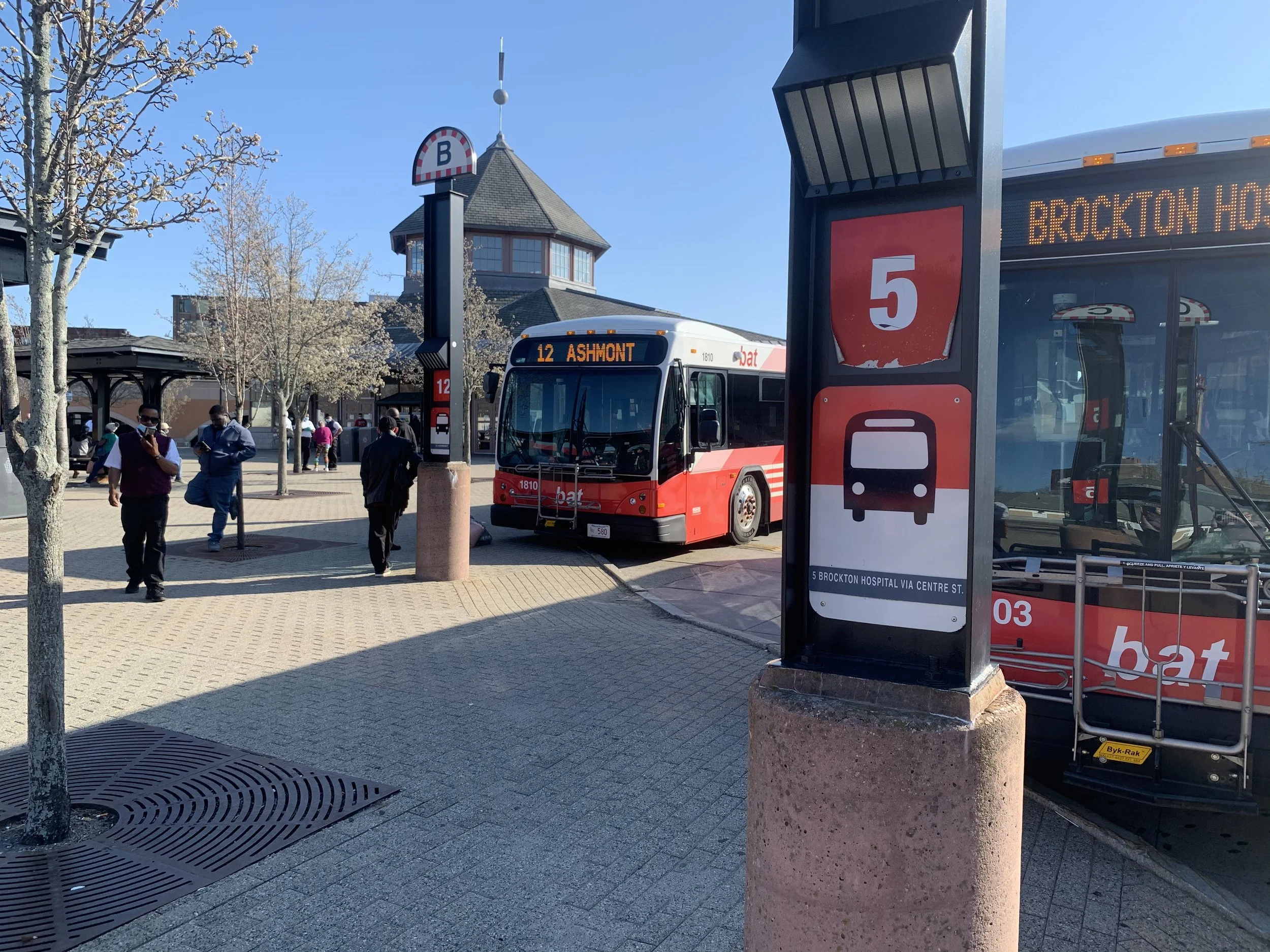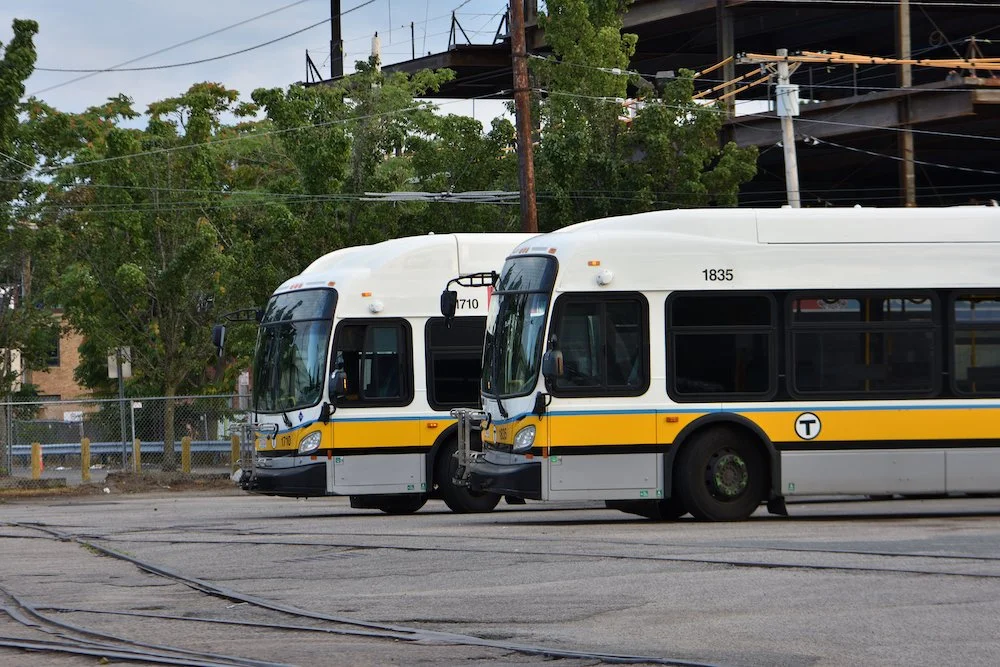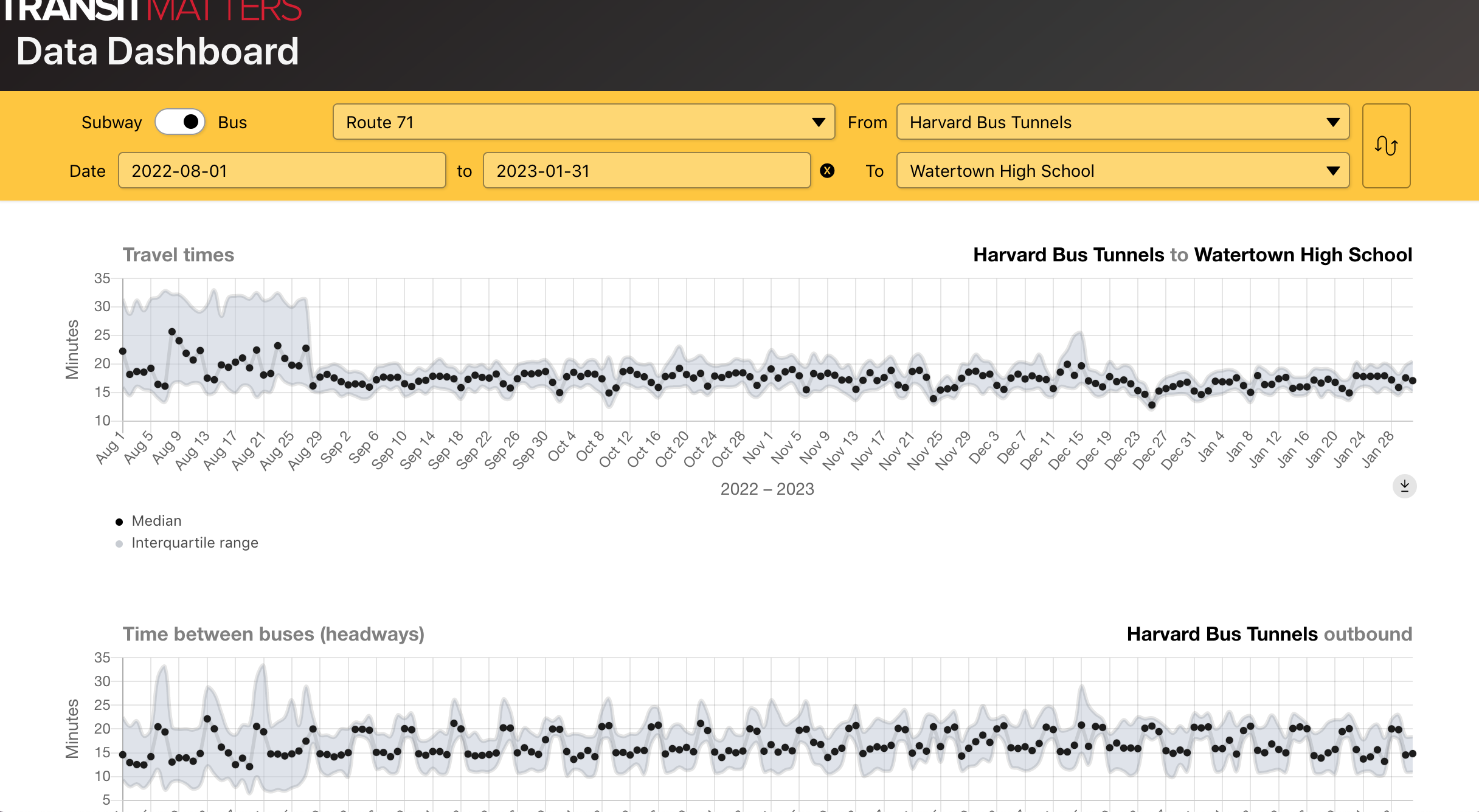LET’S PRIORITIZE BUS RIDERS
Buses are the workhorse for bringing transit to every community, and a critical backbone for many corridors. Through changes in operational practices, upgrading our built environment, and electrifying our bus fleets we are putting our riders at the forefront, we can make buses work better for everyone.
No Frills Frequent Service
Headway management dispatches buses based on where the bus ahead of it is and where the bus behind it will be. Best for the MBTA’s ‘key routes’, which run every 15 minutes or less, this practice helps keep the time between buses consistent. This is especially helpful for reducing bus bunching.
Learn more about what bus bunching is and why it happens, and read more about how headway management can improve our bus network.
Watch this video to see headway management in practice in DC
Click through these photos to see real examples of bus bunching across the MBTA system.
Timed Transfers for Less Waiting
For routes that run every 20 minutes or greater, pulse points can create a better rider experience. This practice has buses arrive at a transfer stop, and wait a few minutes for all routes, minimizing wait times and ensuring seamless transfers.
Help Push for Better Operations
Tell the T to include these practices in their plans to improve our bus network so riders on both high-frequency and low-frequency routes can have seamless bus trips. Fill out the action alert here.
Infrastructure is our Foundation
Operational practices alone cannot improve bus trips. Bus priority infrastructure such as dedicated bus lanes and transit signal priority make bus trips smoother, faster, and more reliable for riders - and make better operations even more effective.
Read more about bus priority infrastructure in Livable Streets Alliance’s report.
Help Push for Better Infrastructure
MBTA has many current and planned efforts to improve bus priority infrastructure as a part of their Better Bus Project, but we want more! Tell the T to continue investing in bus lanes, E Ink signs, Transit Signal Priority (TSP), bus shelter seating, pedestrian upgrades and more to improve bus trips for riders.
Bigger, Bolder EVs
The MBTA operates an average of 410,000 weekday bus trips, almost all diesel. If all of those buses ran on electricity rather than diesel, we’d have cleaner air, healthier people, quieter neighborhoods, and less climate change.
Learn more: Sierra Club
How does your bus compare?
Curious to see the data behind your own commute? Explore the TransitMatters Bus Data Dashboard to see travel times and headways (time between buses) for 16 different bus routes.
About Us
TransitMatters advocates for better transit and regional planning that makes it easier for everyone to get around. Next Generation Buses is one of our key initiatives—if you want to learn more or volunteer with us, visit transitmatters.org.
Photo Credits: Wikimedia and TM Volunteers


